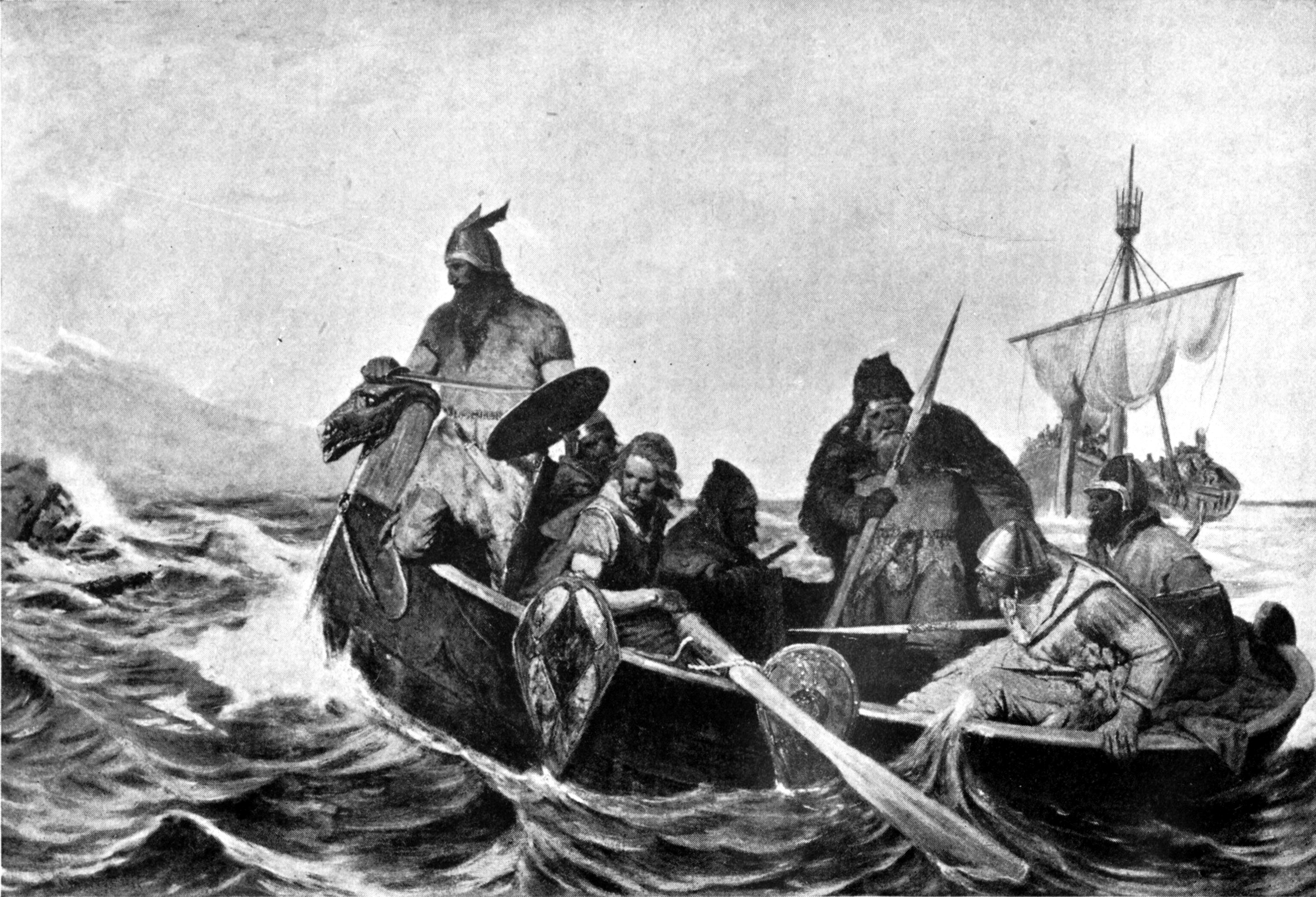Iceland
 Iceland (, ) is a Nordic island country between the North Atlantic and Arctic Oceans, on the Mid-Atlantic Ridge between North America and Europe. It is culturally and politically linked with Europe and the region's most sparsely populated country. Its capital and largest city is Reykjavík, which is home to about 36% of the country's roughly 380,000 residents. The official language of the country is Icelandic.
Iceland (, ) is a Nordic island country between the North Atlantic and Arctic Oceans, on the Mid-Atlantic Ridge between North America and Europe. It is culturally and politically linked with Europe and the region's most sparsely populated country. Its capital and largest city is Reykjavík, which is home to about 36% of the country's roughly 380,000 residents. The official language of the country is Icelandic.Iceland is on a rift between tectonic plates, and its geologic activity includes geysers and frequent volcanic eruptions. The interior consists of a volcanic plateau characterised by sand and lava fields, mountains, and glaciers, and many glacial rivers flow to the sea through the lowlands. Iceland is warmed by the Gulf Stream and has a temperate climate, despite a latitude just south of the Arctic Circle. Its latitude and marine influence keep summers chilly, and most of its islands have a polar climate.
According to the ancient manuscript , the settlement of Iceland began in 874 AD, when the Norwegian chieftain Ingólfr Arnarson became the island's first permanent settler. In the following centuries, Norwegians, and to a lesser extent other Scandinavians, immigrated to Iceland, bringing with them thralls (i.e., slaves or serfs) of Gaelic origin.
The island was governed as an independent commonwealth under the native parliament, the Althing, one of the world's oldest functioning legislative assemblies. After a period of civil strife, Iceland acceded to Norwegian rule in the 13th century. In 1397, Iceland followed Norway's integration into the Kalmar Union along with the kingdoms of Denmark and Sweden, coming under ''de facto'' Danish rule upon its dissolution in 1523. The Danish kingdom introduced Lutheranism by force in 1550, and the Treaty of Kiel formally ceded Iceland to Denmark in 1814.
Influenced by ideals of nationalism after the French Revolution, Iceland's struggle for independence took form and culminated in the Danish–Icelandic Act of Union in 1918, with the establishment of the Kingdom of Iceland, sharing through a personal union the incumbent monarch of Denmark. During the occupation of Denmark in World War II, Iceland voted overwhelmingly to become a republic in 1944, ending the remaining formal ties to Denmark. Although the Althing was suspended from 1799 to 1845, Iceland nevertheless has a claim to sustaining one of the world's longest-running parliaments.
Until the 20th century, Iceland relied largely on subsistence fishing and agriculture. Industrialization of the fisheries and Marshall Plan aid after World War II brought prosperity, and Iceland became one of the world's wealthiest and most developed nations. In 1994 it became a part of the European Economic Area, further diversifying its economy into sectors such as finance, biotechnology, and manufacturing.
Iceland has a market economy with relatively low taxes, compared to other OECD countries, as well as the highest trade union membership in the world. It maintains a Nordic social welfare system that provides universal health care and tertiary education. Iceland ranks highly in international comparisons of national performance, such as quality of life, education, protection of civil liberties, government transparency, and economic freedom. It has the smallest population of any NATO member and is the only one with no standing army, possessing only a lightly armed coast guard. Provided by Wikipedia
-
1
-
2
-
3Reykjavík : [Landlæknisskrifstofan,v. : ill. ; 25 cm.“...Iceland. Landlæknisskrifstofan...”
-
4
-
5[Reykjavik? : s.n.,v. ; 27 cm.“...Iceland. Fjármálaráðuneytið...”
-
6
-
7Published 1845Reykjavík : Alþíngi, 1845-1873.14 v. ; 23 cm.“...Iceland. Alþingi...”
-
8[Reykjavík : Landlæknisskrifstofan,v. ; 26 cm.“...Iceland. Landlæknisskrifstofan...”
-
9by Kempe, Arvid, 1854-1909
Published 1885Lund, F. Berlings boktryckeri, 1885.1 p. l., 70, [2] p. 27 cm.“...Iceland...”
-
10Published 1829Havniæ : sumptibus legati Arnæmagnæani, 1829.1 online resource (2 volumes) : 3 tables.“...Iceland...”
LLMC Digital
Online Resource -
11Published 1953Reykjavík : Museum Rerum Naturalium Reykjavikense, 1953.41 p. : ill. (some folded) ; 25 cm.“...Durham University Iceland Expedition (1948)...”
-
12Published 1977Stockholm : Swedish Council for Building Research, 1977.69 p. : ill. ; 30 cm.“...Nordic Hydrological Conference Reykjavík, Iceland...”

